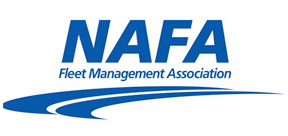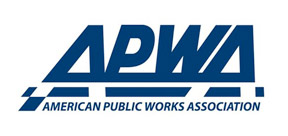Woodbury’s water treatment initiative tackles PFAS for safer drinking water

The city of Woodbury, Minn., is taking decisive action to remove per- and polyfluoroalkyl substances (PFAS) from its drinking water through an innovative water treatment project.
PFAS, often called “forever chemicals,” are commonly found in various household and industrial products. Unfortunately, their resistance to breaking down in the environment has led to contamination issues worldwide. Woodbury and neighboring communities have been affected for nearly two decades, according to Woodbury’s Assistant Public Works Director Jim Westerman.

Industry giant 3M, which has operations in nearby Cottage Grove, has been linked to groundwater contamination. The 3M Cottage Grove plant is considered to be the epicenter of PFAS pollution in Minnesota. As such, the PFAS initiative is funded in part through a $720 million settlement between the state of Minnesota and 3M. Westerman said approximately $300 million is being directed to this project, reflecting Woodbury’s status as the largest community impacted by PFAS within the defined settlement jurisdiction.
This issue is compounded by the fact that Woodbury’s municipal water supply relies entirely on groundwater. Initial low-level PFAS detections in 2007 raised concerns, Westerman said. But it was the progressively stringent health guidance values established by the Minnesota Department of Health that necessitated immediate action. Currently, nine of Woodbury’s 20 groundwater wells have PFAS health advisories in place.
“This didn’t happen overnight,” he said. “Instead, it transgressed across several years (as new data become available).”
As Westerman notes, temporary treatment systems using a technology known as granulated activated carbon (GAC) are already in operation. A permanent treatment facility, set to be completed by 2028, will centralize operations and ensure PFAS removal from the entire system, delivering treated water from all 20 wells.
One recurring theme behind this project is a sense of urgency. When the city declared a local state of emergency in 2020, Westerman said they had to act quickly to serve the best interests of residents.
“A team of us got together, and we implemented temporary treatment — and the technology we deployed for that was granulated activated carbon,” he said. “We really didn’t have time to study it, to be honest. We had to put a solution in place immediately to get those wells back in service.”

His team effectively bet on granulated activated carbon as a mitigation strategy and built a treatment plant in six months. From there, they implemented an extensive pilot study and conducted evaluations before selecting technologies suited to the unique chemistry of Woodbury’s water. The result is a highly flexible facility capable of using both GAC and ion exchange treatments.
The new permanent treatment facility in Woodbury has set a precedent with its adaptable design, a feature rarely implemented at this scale in the United States. Westerman highlighted the project’s forward-thinking approach.
“We’ve designed that facility to use either carbon or ion exchange, or a combination of those two media,” he said. “This is unique because, often in the United States, people use one or the other, and they don’t cross back and forth. We’ve set our facility up so I can start with granulated, activated carbon. Then, if a new ion exchange media comes out, we can take that carbon out of our vessels, and we can put ion exchange media. And in fact, we do anticipate using both media in our response to treatment.”
Additionally, the treatment facility accounts for long-term community growth and environmental considerations. Westerman said when Woodbury plotted out the layout of the water treatment plant site, it specifically set aside space for expansion and the adoption of other treatment technologies.
All of this was taken into account in the context of the bigger picture, the city’s master plan. Assistant Engineering Director Tony Kutzke has specific advice for municipal leaders looking to solve similar problems.

“The master planning of their water system is critical, and it may change how their whole system operates, depending on what type of treatment they need to employ and how their existing system operates,” Kutzke said. “We also wanted to make sure that our plan could be built and expanded to serve the ultimate needs of the community upon full development. So those were all very critical characteristics that we had to identify and plan.”
With that in mind, Woodbury’s efforts extend beyond the plant itself. Seventeen miles of pipeline will be added to connect the facility to existing infrastructure. Kuntze said Woodbury has phased the pipeline work carefully to minimize disruptions for residents.
Transparency and community engagement have been cornerstones of the project. For example, Westerman said the city has hosted open houses and deployed communication strategies like a dedicated website that provides live project updates. These efforts have been met with positive responses.
Westerman recognizes that the project comes with an element of sacrifice, but it represents a significant investment in public health and environmental stewardship. Once completed, the centralized plant will treat up to 32 million gallons of water per day, positioning it as one of the largest pressurized PFAS treatment facilities in the nation. For the city’s 85,000 residents, he’s confident that this “once in a generation” initiative promises a brighter future.
Next Article: St. Louis to introduce municipal ID card

